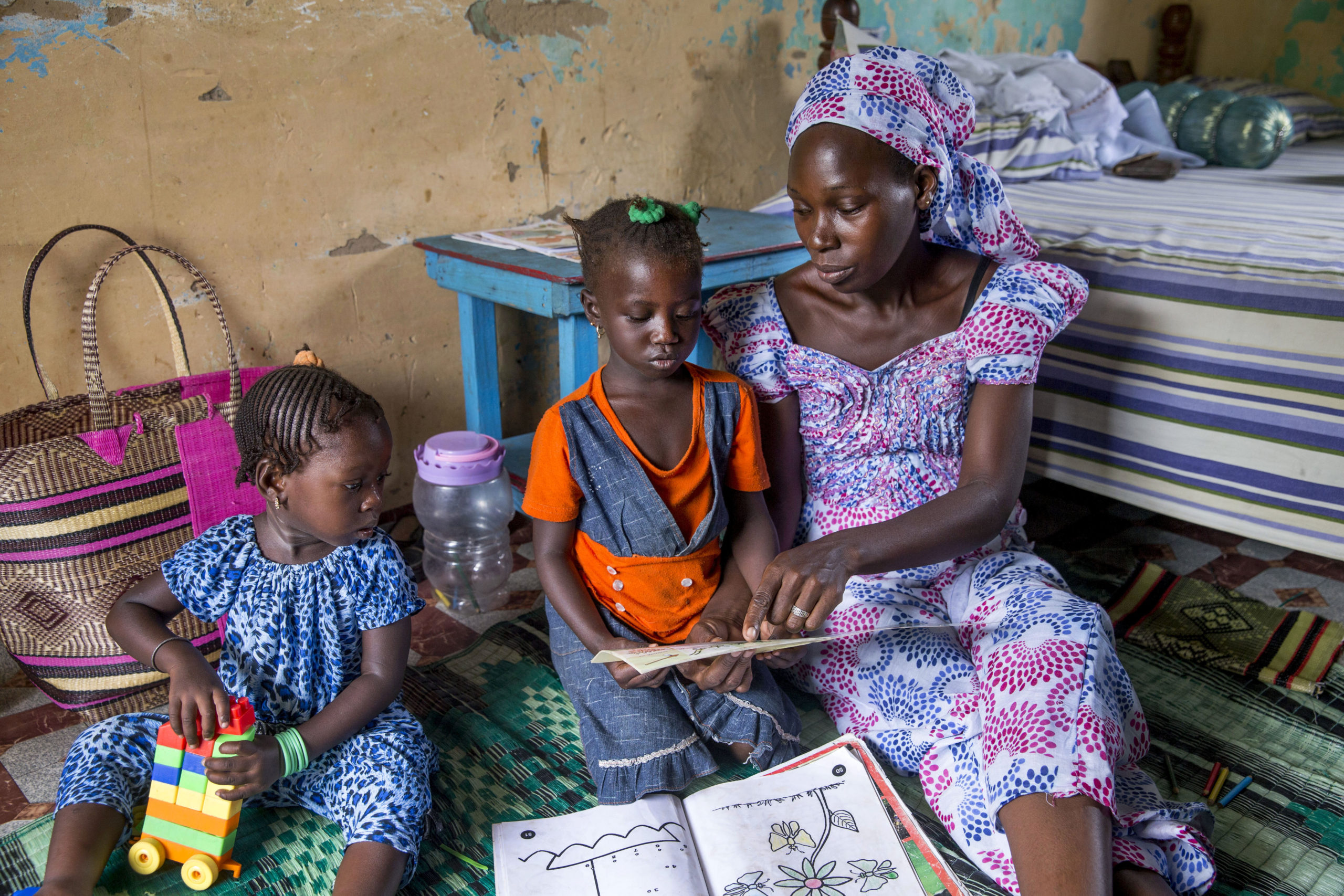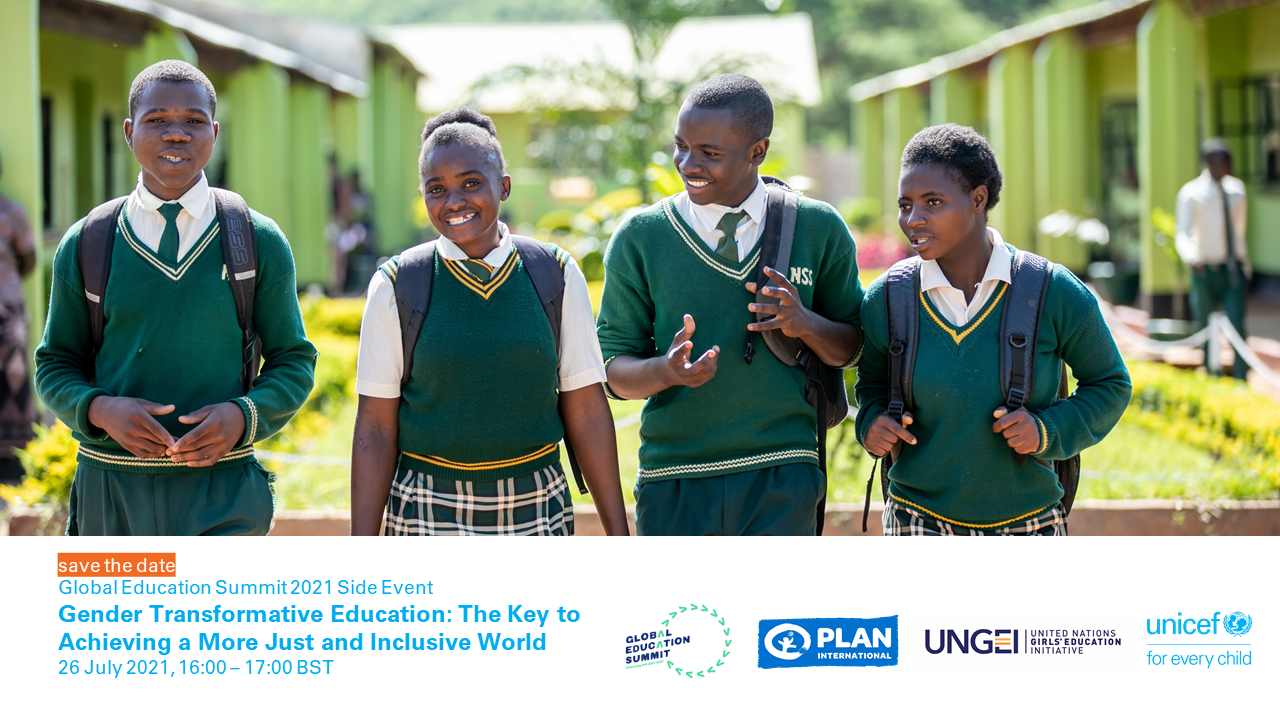Parents are traditionally on the periphery of education systems. At best, we lean on them to help on the margins. At worst, we see them as barriers—particularly in the case of girls’ education. But COVID-19 school closures thrust parents into a central role of substitute teachers. What have we learned through this experience?
Parents can be strong allies for girls’ education.
Based on emerging and forthcoming evidence (including a portfolio of research funded by Echidna Giving), here are three ways we can better support parents as education allies during school closures and beyond.
1. Meet parents where they are at—with low-tech solutions
At first glance, parents do not appear to be good allies when it comes to girls’ remote learning. For instance, forthcoming evidence from a follow-up to this study in West Africa found that caregivers only let their children use their smartphone for three hours—less than half the time in a typical school day. Nearly half of caregivers of girls, compared to 35% of caregivers of boys, did not want their child to use their smartphones for learning activities at all. Parents in India were similarly reluctant to allow girls to engage in technology-enabled learning. But a closer look at parental preferences suggests that parents are willing to support remote learning; they just prefer it to look more like traditional, low-tech or no-tech classroom learning.
For instance, the forthcoming study of West African caregivers found that 93.8% of them prefer “take home packs,” or workbooks, over any other remote learning modality. The second and third picks were COVID-safe in-person classes taught by a teacher (86.4% of caregivers) and paid private tutoring (76.3% of caregivers).

Jonathan Torgovnik/Getty Images/Images of Empowerment
2. Help parents address economic barriers, which are often the real drivers of girls’ school dropout
Encouragingly, parents are largely supportive of their girls being in school—we do not have to win them over on the importance of educating their daughters. In a forthcoming follow-up to this study, 96.8% of parents in India and 98.6% of parents in Kenya report that they “definitely” or “probably” would send their daughters back to school when they re-open. Researchers in Pakistan observed similarly high intentions to re-enroll girls.
But while parents’ attitudes toward girls’ education may be improving, economic barriers to girls’ education have been exacerbated by COVID-19.
A study in Senegal found that COVID-related school closures led at least one household member to leave the workforce in 60% of poor households, compared to 37% of the richest households. Amidst such economic precarity, the cost of returning to school can be prohibitive. Governments can alleviate the economic pressure. A forthcoming study in Kenya found that giving households USD $150 (the approximate cost of one school term) boosted the number of girls returning to school by 8%.
When families lose income, parents struggle to provide basic needs. A study of nearly 4,000 adolescents living in informal settlements in Kenya found that 75% missed meals because their parents could no longer afford food. This level of income insecurity increases girls’ dependence on transactional sex for basic needs, leaving them at heightened risk of unwanted pregnancies and school dropout (which we discuss, here). Forthcoming evidence from Tanzania and other studies in eastern Africa shows that distributing basic supplies—from food to menstrual pads—helps parents mitigate against the ripple effects of economic shocks.
3. Work with school leaders, community-based organizations (CBOs), and other players to bolster parents in their role
Head teachers can engage parents as allies, but they may need to update their perceptions of parental views on girls’ education first. A study in India and Kenya found that 66% of school leaders believed that parents’ lack of commitment to the education of their daughters would be a big barrier to girls’ re-enrollment in schools. However, parents were more likely to cite COVID fears and financial issues as barriers.
In West Africa, emerging evidence suggests parents are more likely to read to and talk about school with their daughters than with their sons (which we discuss further here). A forthcoming follow-up on the same study suggests that boys may be receiving more help with take-home packs than girls, and that fathers are more likely to help sons while mothers are more likely to help daughters.
School leaders, together with the support of community-based organizations, can use insights like these to better understand parents’ engagement with their daughter’s education. Understanding these patterns could help them develop successful parent engagement strategies—like those used in Botswana and Nepal that not only helped to stem learning loss during school closure, but also increased numeracy by up to 30% for both girls and boys alike.
As we look back on two years of education disruption amid this pandemic, let’s celebrate parents’ support for girls’ education and work to set them up for even more success in their role to support girls’ learning.



 English
English العربية
العربية Български
Български Hrvatski
Hrvatski Čeština
Čeština Dansk
Dansk Nederlands
Nederlands Suomi
Suomi Français
Français Deutsch
Deutsch Ελληνικά
Ελληνικά हिन्दी
हिन्दी Italiano
Italiano Română
Română Русский
Русский Español
Español Maltese
Maltese Zulu
Zulu አማርኛ
አማርኛ